KyoZz
Tag, you're it.
Gabe Logan Newell. Here is a name a lot of PC gamers know and respect, but why exactly? Let's take a look at the incredible story of the man that created Valve and Steam.

Important note: This is a condensed summary of multiple sources, I am not a writer I just love this company and wanted to share a summary of different articles I have read. This is not an original work, but it did take time so I hope you enjoy!
Born in 1962, Gabe's passion for tech burgeoned in his early years. He enrolled at Harvard University in 1980 but dropped out to work for Microsoft in 1983. Like many visionaries, school was not for him, choosing to write his destiny rather than sticking to conventional wisdom.
Joining Microsoft was his first big leap. There, he worked on the first three versions of Windows, which laid the foundational stones of his tech career. He ultimately became a "Microsoft Millionaire" during that time.
Later on, inspired by Michael Abrash (who left Microsoft to work on Quake at id Software) and armed with a vision and the courage to act on it, Newell and another Microsoft employee, Mike Harrington, left Microsoft to found Valve in 1996. Harrington and Newell used their money to fund Valve through the development of Half-Life starting with twenty-eight people.
And so the legend was born.
Half Life 1

The original code name for Half-Life was Quiver
The game, inspired by Doom, used the Quake engine from id Software at first. But ultimately, Valve modified the engine so much (notably adding skeletal animation and Direct3D support) that a developer later stated that seventy percent of the engine code was rewritten, giving birth to the famous Source Engine.
At first Valve had difficulties finding a publisher, many believing their project was too ambitious for a studio headed by newcomers to the video game industry. However, Sierra On-Line (praise them!) had been very interested in making a 3D action game, especially one based on the Quake engine, and so signed them for a one-game deal.
The team was initially inspired by the Stephen King story "The Mist" and refined the concept until the story was about Gordon Freeman and the Black Mesa Research Facility. John Carmack famously said, "Story in a game is like story in a porn movie. It's expected to be there, but it's not important." But Newell wanted the company to really focus on providing a more story based exploration, rather than straight action:
"For a long time, 3D action games seemed to keep treading down the same path – an increasing focus on a narrow definition of gameplay and a focus on the rendering [graphics] instead of the gameplay." – Gabe Newell
Gabe Newell explained in an interview that the name Half-Life was chosen because it was evocative of the theme, not clichéd, and had a corresponding visual symbol: the Greek letter lambda, which represents the decay constant in the half-life equation. Valve then hired novelist Marc Laidlaw to shape the story into what it would ultimately be.
The systems are the most important part when looking at a game through the lens of the actual player's experience. However, that does not mean that those same gameplay systems cannot be used in service to a story. And if the story is going to be there, why not try to make it a good one? Laidlaw put it like this: "In a lot of shooters, for all you know, you could be a weapon walking around a level. It's pretty clear in Half-Life that's not the case."
As the game continued development the gaming public started to become more aware of it. The first screenshots of the game were released in May of 1997 and they didn't show a whole lot:


Then at E3 1997 a gameplay trailer was released. And although the team received positive feedback, they were not totally happy with the product:
The team did not feel that they would be able to release it by Christmas of that year, and upon further inspection, decided that they needed to break apart everything they had done, take the pieces, and start over again.
One of the first steps after deciding to scrap the original version of the game was to see what worked, and what didn't. The developers designed a single level that had all the design elements and technology that they had created over the previous year for the initial version of the game.
This allowed them to see what worked, and what didn't. Once that exercise was complete, they moved on to the next version of the game, with a design led be a committee. There was no lead game designer on Half-Life, or Director that many present day games have. Instead what they had they referred to as The Cabal. The Cabal was cross-disciplinary team that would spend several hours a day, several days a week working out the high level details of level design, as well as scripted events. This team included three engineers, a level designer, a writer, and an animator.


Play testing started in the third month of the re-do. Sierra handled pulling in players from the area and during each session, a member from the Cabal, the level designer, and occasionally an engineer would sit and silently observe the player and take notes.
Ultimately there were over 200 play-test sessions, with each session giving the team on average 100 action items. That is about 20,000 action items that were generated from the playtest sessions alone!
At E3 1998 it was given Game Critics Awards for "Best PC Game" and "Best Action Game" at the expo. The release date was delayed several times in 1998 before the game was finally released in November of that year. Valve released two Half-Life demos. The first, Half-Life: Day One, contained the first fifth of the game and was distributed with certain graphic cards. The second, Half-Life: Uplink, was released on February 12, 1999, and featured original content. The game has a score of 96% on Metacritic and it won over 50 PC Game of the Year awards, with several reviewers citing the level of immersion and interactivity as revolutionary.
It was ported to the PlayStation 2 by Gearbox Software and released in 2001. This version of the game had a significant overhaul in terms of both character models, weapons, and more advanced and extended levels and general map geometry. Also added in was a head-to-head play and a co-op expansion called Half-Life: Decay that allowed players to play as the two female scientists Gina Cross and Colette Green at Black Mesa.
Counter Strike

Counter Strike (CS) was initially released as a mod for Half-Life that was designed by Minh "Gooseman" Le and Jess "Cliffe" Cliffe before the rights to the mod's intellectual property were acquired by Valve, who then turned Counter-Strike into a retail product released in 2000. Players immediately connected with the quick and responsive gameplay and soon, a community was forming around the game. As competitive gaming became more popular, an esports scene began to develop. Major events like the Cyberathlete Professional League emerged, giving teams like Ninjas in Pyjamas a chance to shine on the world stage. With interest growing, it would soon be time for Valve to iterate on CS.
Counter-Strike: Condition Zero, the first CS sequel, featured two game modes for a single player and bonus levels. This game was considered a failure due to the many setbacks and little excitement from its fans. Then, a second sequel named Counter-Strike: Source was released shortly after the first and used the Valve Source game engine. New introductions included novel game elements such as maps, guns, and items. CS Source was considered by many to be a misstep, lacking the responsiveness of its predecessor, despite its superior graphics. The community became divided over which version of the game was superior and discord split the fanbase. While this civil war was raging, the esports scene was reaching new heights
Additionally, Counter-Strike: Source incorporated Steam for the first time.
Half Life 2

Half-Life 2's development began almost immediately after the release of Half-Life. The game was developed by a team of 82 people (or around 100 including voice actors). During that elongated process, many things were outlined, created and cut before the game's final release. Early plot ideas are discussed and one of these ideas is as follow: Gordon Freeman will travel to other planets and destroy the Xen forces. This concept was abandoned as it would make continuity between levels difficult. Viktor Antonov, Valve's art director, suggests that the game takes place in an Eastern European city. The team likes this idea and the development of the Source engine begins. The main focuses are creating a physics system and a system capable of showing realistic facial expressions.
Valve integrated the Havok physics engine, which simulates real-world physics to reinforce the player's sense of presence and create new gameplay. Plot begins to solidify: It takes place in a world dominated by an evil empire called the Combine. Half-Life 2 was originally intended to be a far darker game based on far grittier artwork where the Combine were more obviously draining the oceans for minerals and replacing the atmosphere with noxious, murky gases.

Early concept of Alyx
In late 2001, Valve began creating a showreel hoping to demonstrate it at E3 the next year. For several months, Newell let the team work without his input so he could provide unbiased feedback, and focused on developing Steam (Valve's upcoming digital distribution service). The team presented the showreel to Newell, showcasing physics, environments such as the Borealis, and a dialogue-heavy scene with the scientist character Dr. Kleiner. Newell felt the showreel did not adequately show how the physics would affect gameplay and that the Kleiner scene was overlong. Reflecting on the feedback, Laidlaw concluded that the character drama had to support interactivity and gameplay.
By the time the Source technology had matured, they found themselves in a position similar, in some ways, to where they were at the start of the Cabal Process for Half-Life, but very different in others.They had a full story timeline, detailed story snippets, all the major character profiles, a set of locations and drawings, and a fairly clear idea of what technology they would have for the final game. In terms of production, though, the team only had a bunch of raw material in the bank: some weapons, some cool monsters (and some not-so-cool monsters), and pieces of interesting levels. However and as with Half-Life, at this stage of development the technology was not being taken advantage of. You couldn't play the game all the way through, and none of the levels were tied together in a coherent fashion. Sometime in 2002, a second trailer is finished. The team wishes to show it to Newell who, as an outsider to what's been going on in the project, would give the team honest feedback. The second trailer featured a buggy race along the City 17 coast, an encounter with headcrabs on a pier, an alien strider attacking the city, and a greatly shortened Kleiner sequence. In October, Newell told them they would announce Half-Life 2 at E3 2003 and release it by the end of the year.
Newell also announced a release date of September 30, 2003, hoping this would motivate the team. They worked long hours to meet the deadline but by July it was clear they would miss it.
On September 23, Valve released a statement targeting a release for the holiday season, leading to fan backlash. Newell had been hesitant to announce this without a new release date: "We were paralyzed. We knew we weren't going to make the date we promised, and that was going to be a huge fiasco and really embarrassing. But we didn't have a new date to give people either."
November 16, 2004: Half-Life 2 is released in retail and on Steam. The response is overwhelmingly positive. The game released with a score of 96% on Metacritic, based on 81 reviews. It was the fifth game to receive ten out of ten from Edge. Critics praised the graphics, physics, story and gameplay.
The modding community is also very fond of Half-Life 2. All kinds of mods for Half-Life 2 are regularly released to this day. The speedrunner community also fell in love with Half-Life 2. The features of the game engine and its physics allow you to actively experiment with high-speed passing. Speed-running in Half-Life 2 is a separate sport, with leaders constantly changing. But it is equally enjoyable to watch anyway.
A speedrun commented by 3 devs, a really fun and interesting watch!
Portal

Portal began with the 2005 freeware game Narbacular Drop, developed by students of the DigiPen Institute of Technology. A key difference is that Portal's portal gun cannot create a portal through an existing portal, unlike in Narbacular Drop. Robin Walker, one of Valve's developers, saw the game at the DigiPen's career fair and was really impressed.
He contacted the team for advice and offered to show their game at Valve's offices. After their presentation, Valve's president Gabe Newell offered the students jobs at Valve to develop the game further. For the first year of development, the team focused mostly on the gameplay without narrative structure. But Playtesters found the game fun but asked about what these test chambers were leading towards. This prompted the team to come up with a narrative for Portal. The 2005 iteration of Portal largely took design cues from Half-Life 2, especially Nova Prospekt. Most notably, instead of being guided through the facility by GLaDOS, the player was to navigate the facility alone and eventually escape.
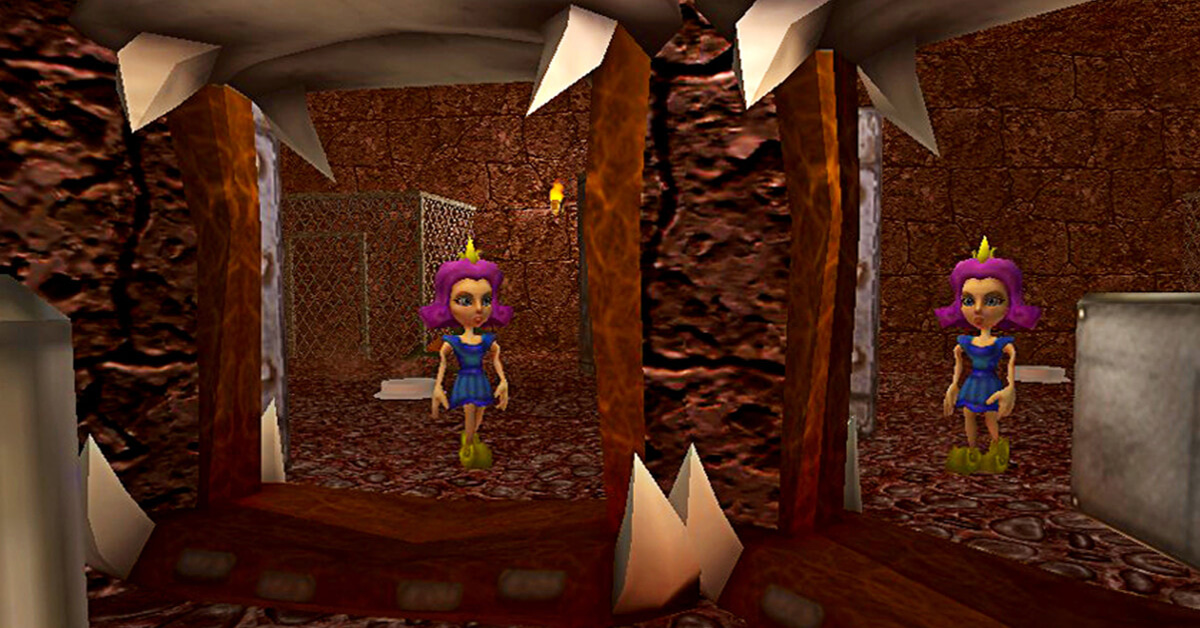

Narbacular Drop
In early 2006, the transition was made from the Nova Prospekt design to a cleaner, more sci-fi look. Newell said he was impressed with the team as "they had actually carried the concept through", already having included the interaction between portals and physics, completing most of the work that Valve would have had to commit on their own.
Portal in late 2006 was largely similar to the final product, with the exception of a slightly different map layout, textures, lighting, and a differently animated portal gun as well as a different GLaDOS battle.
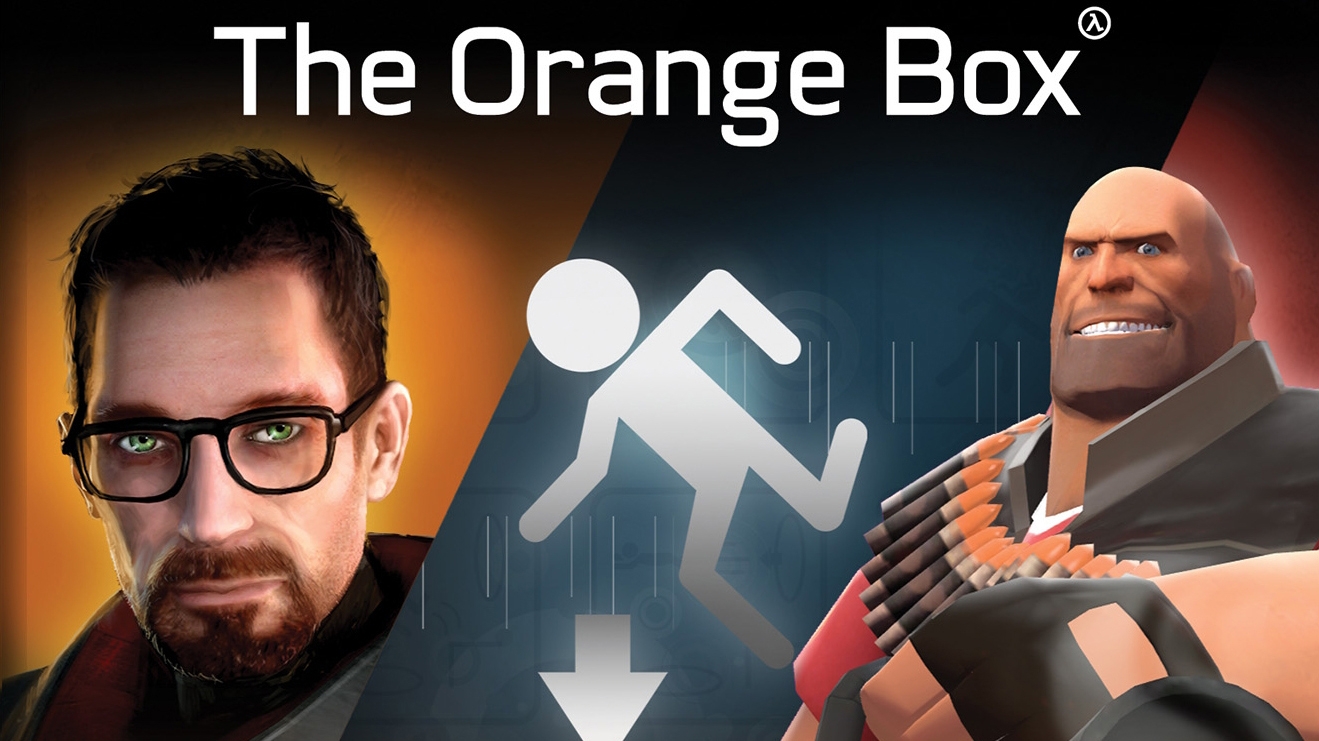
When the team started working on Portal, they didn't know that it was going to be packaged inside The Orange Box with Half-Life 2, the Half-Life episodes, and Team Fortress 2. Under normal circumstances, it would be extremely challenging to market an experimental project like Portal. Placing the game in The Orange Box alongside a well-known franchise allowed them to present a new concept to a wider base of players than they could have if it were only sold as a standalone game.
Despite the common wisdom that gamers simply want to play the same basic concepts over and over again, Portal is happy proof that, when approached in the right way, original gameplay and narrative elements can produce fun, memorable, and most importantly for everyone's ongoing employment, successful games.
Portal received critical acclaim, often earning more praise than either Half-Life 2: Episode Two or Team Fortress 2, two titles also included in The Orange Box. It was praised for its unique gameplay and dark, deadpan humor. Aggregate reviews for the standalone PC version of Portal gave the game a 90/100 through 28 reviews on Metacritic.
Team Fortress 2

Team Fortress 2 started development in 1998 (yes you read that right) as stated by Gabe Newell. Originally developed as a freeware mod for Quake, Team Fortress 2 switched to the GoldSrc engine in 1998 after the development team of Team Fortress Software – consisting of Robin Walker and John Cook - was first contracted and employed by Valve. The game underwent several stages of development that drastically changed its gameplay and setting before it was officially released. In 1999, the game appeared to be abandoning the art styles of the original Team Fortress Classic by transitioning toward a more realistic and militaristic style of gameplay. However, the design continued evolving over the game's nine-year development period and game engine switch.
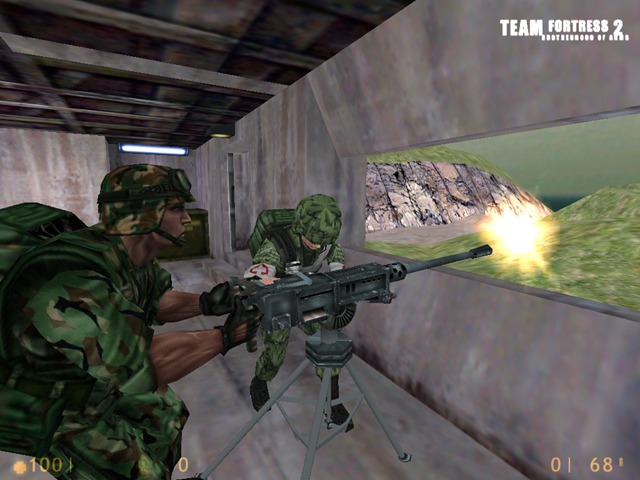
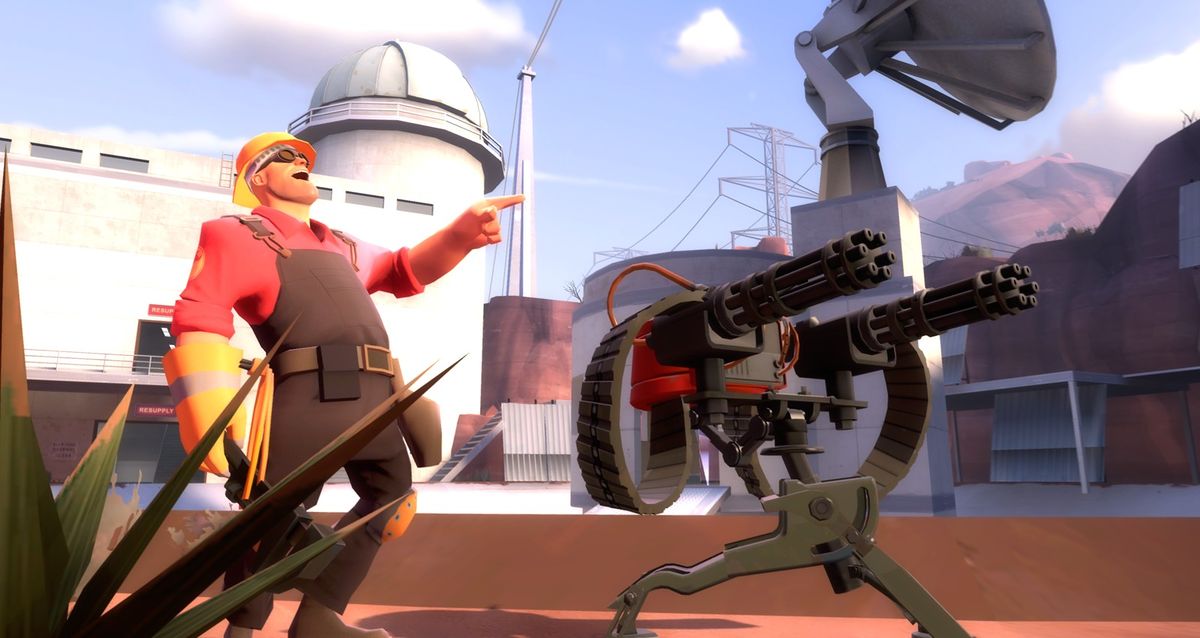
The original build of TF2 (left) had a way more realistic style than the final build, which is way more stylized (right)
The cartoon-like approach "heavily influenced by early 20th century commercial illustrations" is achieved with extensive use and manipulation of phong shading. The development commentary in the game suggests that part of the reason for the cartoonish style was the difficulty in explaining the maps and characters in realistic terms.
In mid-2000, Valve announced that Team Fortress 2 had been delayed for a second time.They attributed the delay to development switching to its new in-house engine, Source. Following the announcement, Valve released no news on the game for six years.
During the July 2006 Electronic Arts press conference, Valve revealed that Team Fortress 2 would ship as the multiplayer component of The Orange Box. A conference trailer showcasing all nine of the classes demonstrated for the first time the game's whimsical new visual style. Managing director of Valve Gabe Newell said that the company's goal was to create "the best looking and best-playing class-based multiplayer game"
Team Fortress 2 was first launched with the Source engine's new dynamic lighting, shadowing and soft particle technologies and Valve gave the same visual enhancements to Half-Life 2: Episode Two, another one of the game present in The Orange Box. Since the release of Team Fortress 2, Valve has continually released free updates and patches. As of July 2012, each class has been given a dedicated patch that provides new weapons, items, and other gameplay changes. Valve has also released tools to allow users to create maps, weapons, and cosmetic items through a contribution site and many of the most popular are added to the game. Over the years, Valve has collaborated with several different games, companies, and communities to feature special crossover content such as weapons and cosmetic items. The model they developed during the TF2 life cycle can be associated with the GAAS impulse that the industry has recently experienced.
Team Fortress 2 was very well received by critics and consumers alike with an overall scores of 92% "universal acclaim" on Metacritic.
Since 2019, Team Fortress 2 has seen lots of bots join the casual servers. On the 26th of May 2022, people of the game's community held a peaceful protest using the hashtag '#savetf2' with the goal being to get Valve to respond. They were able to get a response from Valve saying: "TF2 community, we hear you! We love this game and know you do, too. We see how large this issue has become and are working to improve things."
One year later, another protest using the hashtag '#fixtf2' was held. This time, the protesters did not buy anything until the bots were gone. There was also a petition held with all of the signers names/e-mails being printed onto a book which was later sent to Valve. Since then, there has been a significant decrease in bots thanks to the Valve Anti-Cheat system.
I'll stop there, because it's already a long read haha. I hope you enjoyed it!
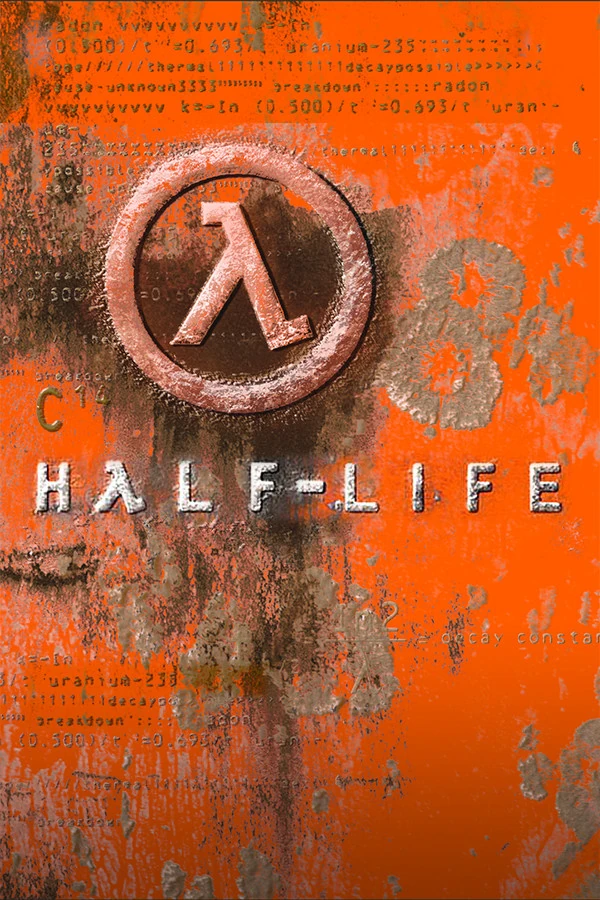
 half-life.fandom.com
half-life.fandom.com

 arcadology.net
arcadology.net
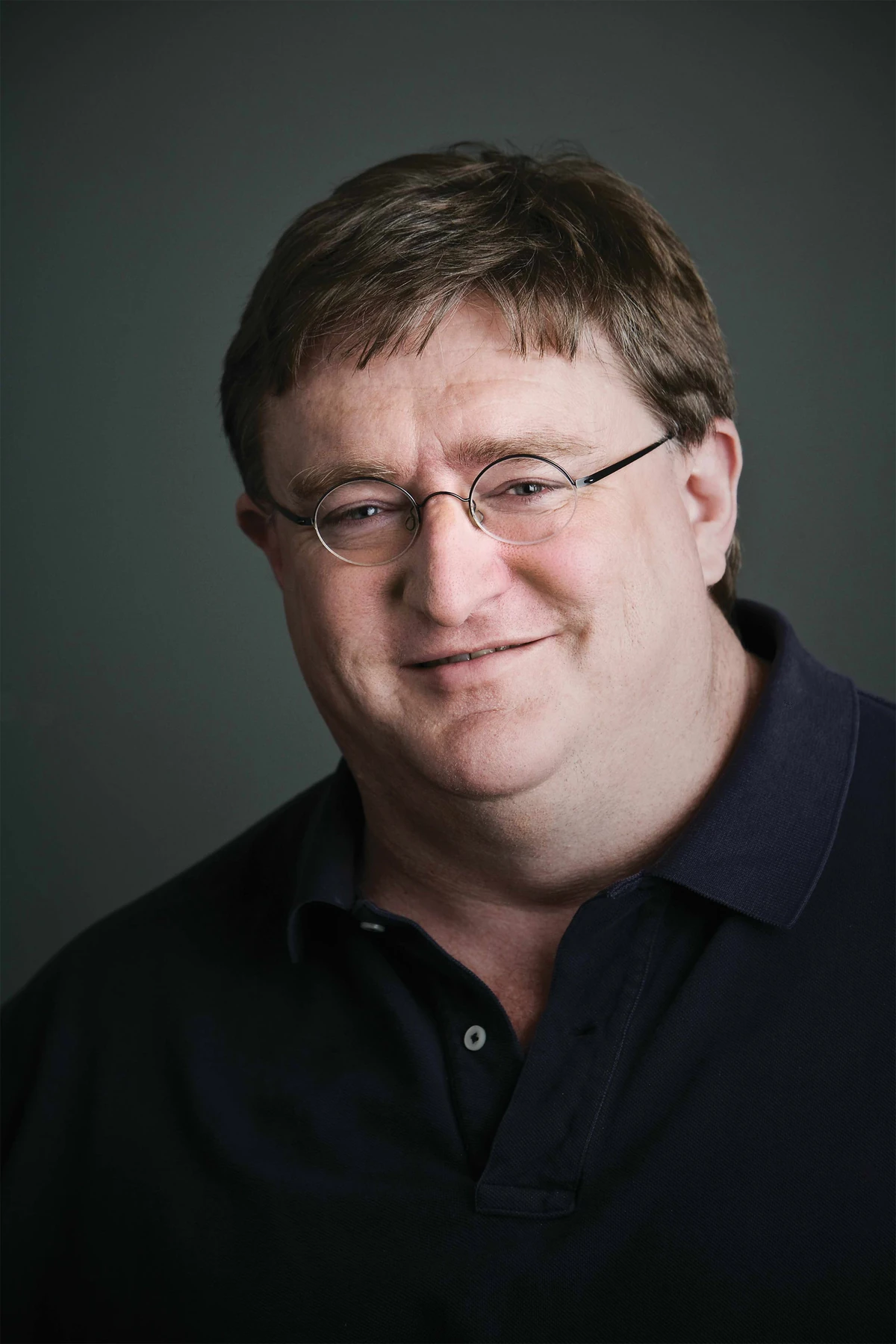
 half-life.fandom.com
half-life.fandom.com

 en.wikipedia.org
en.wikipedia.org
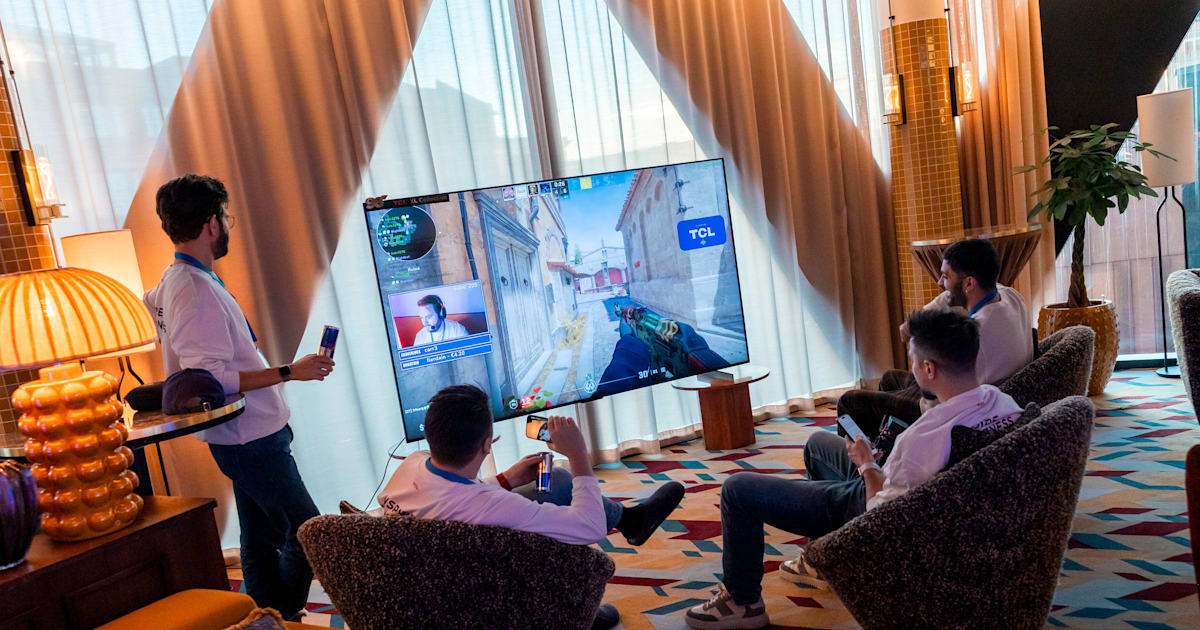
 www.redbull.com
www.redbull.com

 blog.acer.com
blog.acer.com
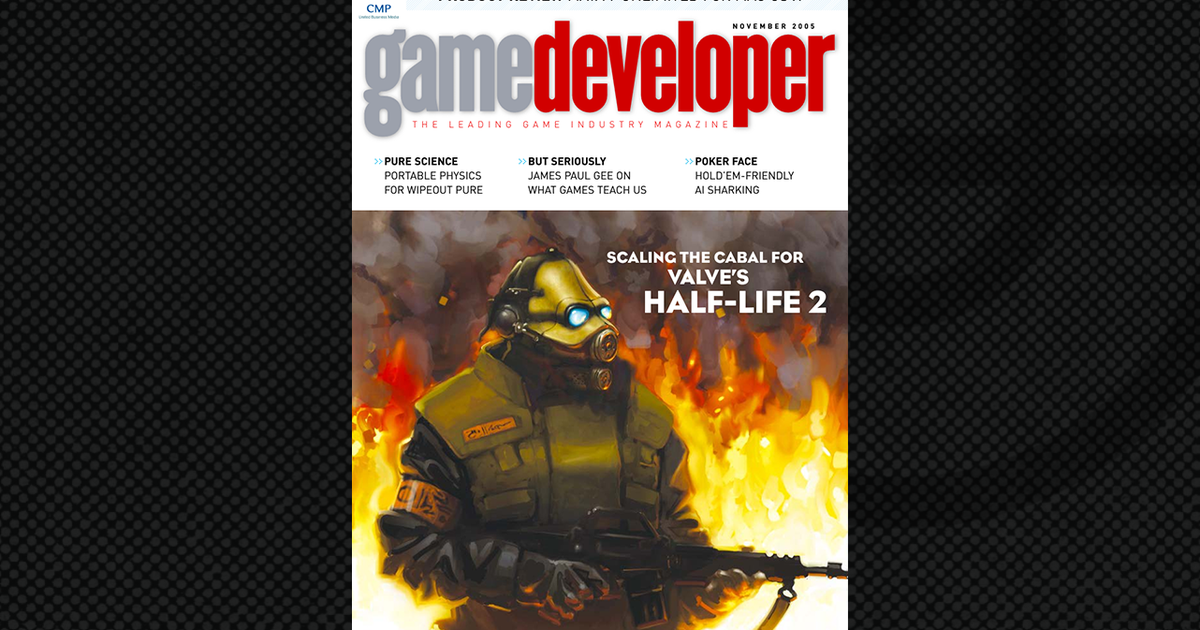
 www.gamedeveloper.com
www.gamedeveloper.com
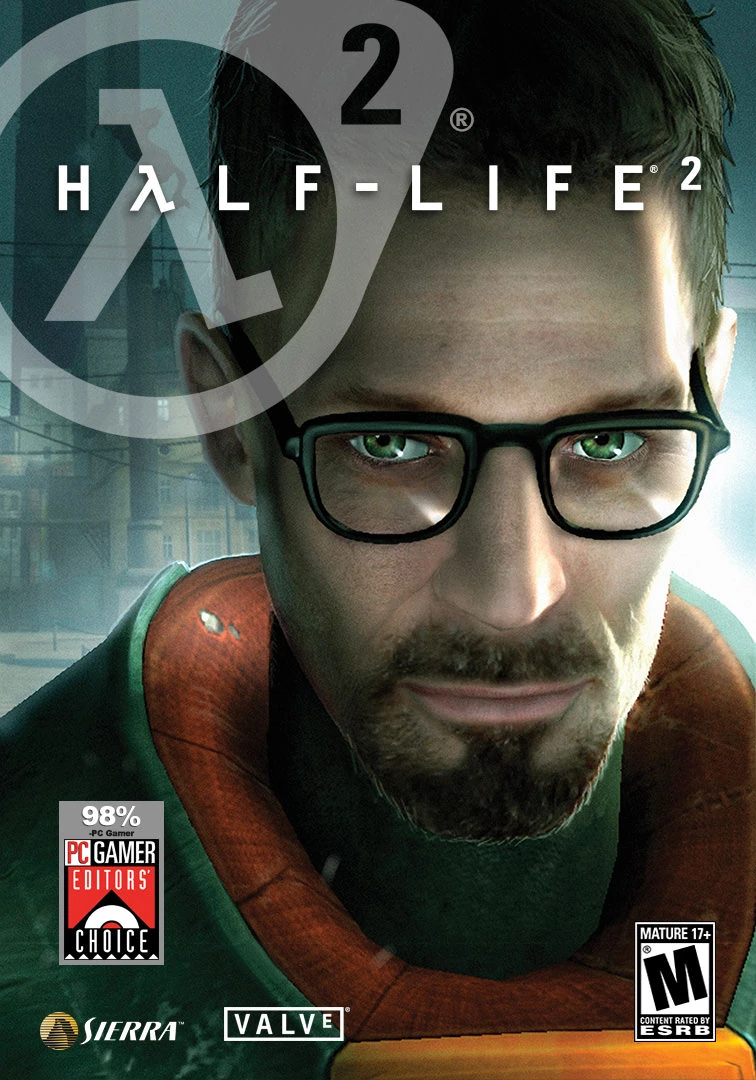
 half-life.fandom.com
half-life.fandom.com

 www.vg247.com
www.vg247.com

 www.gamedeveloper.com
www.gamedeveloper.com

 half-life.fandom.com
half-life.fandom.com
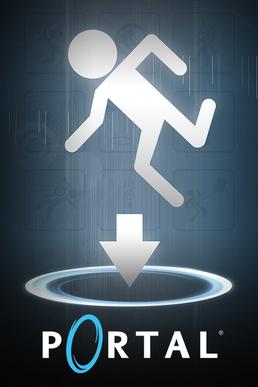
 en.wikipedia.org
en.wikipedia.org

 simple.wikipedia.org
simple.wikipedia.org

 wiki.teamfortress.com
wiki.teamfortress.com
 vcc.wiki
vcc.wiki

 www.ign.com
www.ign.com

Important note: This is a condensed summary of multiple sources, I am not a writer I just love this company and wanted to share a summary of different articles I have read. This is not an original work, but it did take time so I hope you enjoy!
Born in 1962, Gabe's passion for tech burgeoned in his early years. He enrolled at Harvard University in 1980 but dropped out to work for Microsoft in 1983. Like many visionaries, school was not for him, choosing to write his destiny rather than sticking to conventional wisdom.
Joining Microsoft was his first big leap. There, he worked on the first three versions of Windows, which laid the foundational stones of his tech career. He ultimately became a "Microsoft Millionaire" during that time.
Later on, inspired by Michael Abrash (who left Microsoft to work on Quake at id Software) and armed with a vision and the courage to act on it, Newell and another Microsoft employee, Mike Harrington, left Microsoft to found Valve in 1996. Harrington and Newell used their money to fund Valve through the development of Half-Life starting with twenty-eight people.
And so the legend was born.
Half Life 1

The original code name for Half-Life was Quiver
The game, inspired by Doom, used the Quake engine from id Software at first. But ultimately, Valve modified the engine so much (notably adding skeletal animation and Direct3D support) that a developer later stated that seventy percent of the engine code was rewritten, giving birth to the famous Source Engine.
At first Valve had difficulties finding a publisher, many believing their project was too ambitious for a studio headed by newcomers to the video game industry. However, Sierra On-Line (praise them!) had been very interested in making a 3D action game, especially one based on the Quake engine, and so signed them for a one-game deal.
The team was initially inspired by the Stephen King story "The Mist" and refined the concept until the story was about Gordon Freeman and the Black Mesa Research Facility. John Carmack famously said, "Story in a game is like story in a porn movie. It's expected to be there, but it's not important." But Newell wanted the company to really focus on providing a more story based exploration, rather than straight action:
"For a long time, 3D action games seemed to keep treading down the same path – an increasing focus on a narrow definition of gameplay and a focus on the rendering [graphics] instead of the gameplay." – Gabe Newell
Gabe Newell explained in an interview that the name Half-Life was chosen because it was evocative of the theme, not clichéd, and had a corresponding visual symbol: the Greek letter lambda, which represents the decay constant in the half-life equation. Valve then hired novelist Marc Laidlaw to shape the story into what it would ultimately be.
The systems are the most important part when looking at a game through the lens of the actual player's experience. However, that does not mean that those same gameplay systems cannot be used in service to a story. And if the story is going to be there, why not try to make it a good one? Laidlaw put it like this: "In a lot of shooters, for all you know, you could be a weapon walking around a level. It's pretty clear in Half-Life that's not the case."
As the game continued development the gaming public started to become more aware of it. The first screenshots of the game were released in May of 1997 and they didn't show a whole lot:


Then at E3 1997 a gameplay trailer was released. And although the team received positive feedback, they were not totally happy with the product:
The team did not feel that they would be able to release it by Christmas of that year, and upon further inspection, decided that they needed to break apart everything they had done, take the pieces, and start over again.
One of the first steps after deciding to scrap the original version of the game was to see what worked, and what didn't. The developers designed a single level that had all the design elements and technology that they had created over the previous year for the initial version of the game.
This allowed them to see what worked, and what didn't. Once that exercise was complete, they moved on to the next version of the game, with a design led be a committee. There was no lead game designer on Half-Life, or Director that many present day games have. Instead what they had they referred to as The Cabal. The Cabal was cross-disciplinary team that would spend several hours a day, several days a week working out the high level details of level design, as well as scripted events. This team included three engineers, a level designer, a writer, and an animator.


Play testing started in the third month of the re-do. Sierra handled pulling in players from the area and during each session, a member from the Cabal, the level designer, and occasionally an engineer would sit and silently observe the player and take notes.
Ultimately there were over 200 play-test sessions, with each session giving the team on average 100 action items. That is about 20,000 action items that were generated from the playtest sessions alone!
At E3 1998 it was given Game Critics Awards for "Best PC Game" and "Best Action Game" at the expo. The release date was delayed several times in 1998 before the game was finally released in November of that year. Valve released two Half-Life demos. The first, Half-Life: Day One, contained the first fifth of the game and was distributed with certain graphic cards. The second, Half-Life: Uplink, was released on February 12, 1999, and featured original content. The game has a score of 96% on Metacritic and it won over 50 PC Game of the Year awards, with several reviewers citing the level of immersion and interactivity as revolutionary.
It was ported to the PlayStation 2 by Gearbox Software and released in 2001. This version of the game had a significant overhaul in terms of both character models, weapons, and more advanced and extended levels and general map geometry. Also added in was a head-to-head play and a co-op expansion called Half-Life: Decay that allowed players to play as the two female scientists Gina Cross and Colette Green at Black Mesa.
Counter Strike

Counter Strike (CS) was initially released as a mod for Half-Life that was designed by Minh "Gooseman" Le and Jess "Cliffe" Cliffe before the rights to the mod's intellectual property were acquired by Valve, who then turned Counter-Strike into a retail product released in 2000. Players immediately connected with the quick and responsive gameplay and soon, a community was forming around the game. As competitive gaming became more popular, an esports scene began to develop. Major events like the Cyberathlete Professional League emerged, giving teams like Ninjas in Pyjamas a chance to shine on the world stage. With interest growing, it would soon be time for Valve to iterate on CS.
Counter-Strike: Condition Zero, the first CS sequel, featured two game modes for a single player and bonus levels. This game was considered a failure due to the many setbacks and little excitement from its fans. Then, a second sequel named Counter-Strike: Source was released shortly after the first and used the Valve Source game engine. New introductions included novel game elements such as maps, guns, and items. CS Source was considered by many to be a misstep, lacking the responsiveness of its predecessor, despite its superior graphics. The community became divided over which version of the game was superior and discord split the fanbase. While this civil war was raging, the esports scene was reaching new heights
Additionally, Counter-Strike: Source incorporated Steam for the first time.
Half Life 2

Half-Life 2's development began almost immediately after the release of Half-Life. The game was developed by a team of 82 people (or around 100 including voice actors). During that elongated process, many things were outlined, created and cut before the game's final release. Early plot ideas are discussed and one of these ideas is as follow: Gordon Freeman will travel to other planets and destroy the Xen forces. This concept was abandoned as it would make continuity between levels difficult. Viktor Antonov, Valve's art director, suggests that the game takes place in an Eastern European city. The team likes this idea and the development of the Source engine begins. The main focuses are creating a physics system and a system capable of showing realistic facial expressions.
Valve integrated the Havok physics engine, which simulates real-world physics to reinforce the player's sense of presence and create new gameplay. Plot begins to solidify: It takes place in a world dominated by an evil empire called the Combine. Half-Life 2 was originally intended to be a far darker game based on far grittier artwork where the Combine were more obviously draining the oceans for minerals and replacing the atmosphere with noxious, murky gases.

Early concept of Alyx
In late 2001, Valve began creating a showreel hoping to demonstrate it at E3 the next year. For several months, Newell let the team work without his input so he could provide unbiased feedback, and focused on developing Steam (Valve's upcoming digital distribution service). The team presented the showreel to Newell, showcasing physics, environments such as the Borealis, and a dialogue-heavy scene with the scientist character Dr. Kleiner. Newell felt the showreel did not adequately show how the physics would affect gameplay and that the Kleiner scene was overlong. Reflecting on the feedback, Laidlaw concluded that the character drama had to support interactivity and gameplay.
By the time the Source technology had matured, they found themselves in a position similar, in some ways, to where they were at the start of the Cabal Process for Half-Life, but very different in others.They had a full story timeline, detailed story snippets, all the major character profiles, a set of locations and drawings, and a fairly clear idea of what technology they would have for the final game. In terms of production, though, the team only had a bunch of raw material in the bank: some weapons, some cool monsters (and some not-so-cool monsters), and pieces of interesting levels. However and as with Half-Life, at this stage of development the technology was not being taken advantage of. You couldn't play the game all the way through, and none of the levels were tied together in a coherent fashion. Sometime in 2002, a second trailer is finished. The team wishes to show it to Newell who, as an outsider to what's been going on in the project, would give the team honest feedback. The second trailer featured a buggy race along the City 17 coast, an encounter with headcrabs on a pier, an alien strider attacking the city, and a greatly shortened Kleiner sequence. In October, Newell told them they would announce Half-Life 2 at E3 2003 and release it by the end of the year.
Newell also announced a release date of September 30, 2003, hoping this would motivate the team. They worked long hours to meet the deadline but by July it was clear they would miss it.
On September 23, Valve released a statement targeting a release for the holiday season, leading to fan backlash. Newell had been hesitant to announce this without a new release date: "We were paralyzed. We knew we weren't going to make the date we promised, and that was going to be a huge fiasco and really embarrassing. But we didn't have a new date to give people either."
November 16, 2004: Half-Life 2 is released in retail and on Steam. The response is overwhelmingly positive. The game released with a score of 96% on Metacritic, based on 81 reviews. It was the fifth game to receive ten out of ten from Edge. Critics praised the graphics, physics, story and gameplay.
The modding community is also very fond of Half-Life 2. All kinds of mods for Half-Life 2 are regularly released to this day. The speedrunner community also fell in love with Half-Life 2. The features of the game engine and its physics allow you to actively experiment with high-speed passing. Speed-running in Half-Life 2 is a separate sport, with leaders constantly changing. But it is equally enjoyable to watch anyway.
A speedrun commented by 3 devs, a really fun and interesting watch!
Portal

Portal began with the 2005 freeware game Narbacular Drop, developed by students of the DigiPen Institute of Technology. A key difference is that Portal's portal gun cannot create a portal through an existing portal, unlike in Narbacular Drop. Robin Walker, one of Valve's developers, saw the game at the DigiPen's career fair and was really impressed.
He contacted the team for advice and offered to show their game at Valve's offices. After their presentation, Valve's president Gabe Newell offered the students jobs at Valve to develop the game further. For the first year of development, the team focused mostly on the gameplay without narrative structure. But Playtesters found the game fun but asked about what these test chambers were leading towards. This prompted the team to come up with a narrative for Portal. The 2005 iteration of Portal largely took design cues from Half-Life 2, especially Nova Prospekt. Most notably, instead of being guided through the facility by GLaDOS, the player was to navigate the facility alone and eventually escape.


Narbacular Drop
In early 2006, the transition was made from the Nova Prospekt design to a cleaner, more sci-fi look. Newell said he was impressed with the team as "they had actually carried the concept through", already having included the interaction between portals and physics, completing most of the work that Valve would have had to commit on their own.
Portal in late 2006 was largely similar to the final product, with the exception of a slightly different map layout, textures, lighting, and a differently animated portal gun as well as a different GLaDOS battle.
The Orange Box

When the team started working on Portal, they didn't know that it was going to be packaged inside The Orange Box with Half-Life 2, the Half-Life episodes, and Team Fortress 2. Under normal circumstances, it would be extremely challenging to market an experimental project like Portal. Placing the game in The Orange Box alongside a well-known franchise allowed them to present a new concept to a wider base of players than they could have if it were only sold as a standalone game.
Despite the common wisdom that gamers simply want to play the same basic concepts over and over again, Portal is happy proof that, when approached in the right way, original gameplay and narrative elements can produce fun, memorable, and most importantly for everyone's ongoing employment, successful games.
Portal received critical acclaim, often earning more praise than either Half-Life 2: Episode Two or Team Fortress 2, two titles also included in The Orange Box. It was praised for its unique gameplay and dark, deadpan humor. Aggregate reviews for the standalone PC version of Portal gave the game a 90/100 through 28 reviews on Metacritic.
Team Fortress 2

Team Fortress 2 started development in 1998 (yes you read that right) as stated by Gabe Newell. Originally developed as a freeware mod for Quake, Team Fortress 2 switched to the GoldSrc engine in 1998 after the development team of Team Fortress Software – consisting of Robin Walker and John Cook - was first contracted and employed by Valve. The game underwent several stages of development that drastically changed its gameplay and setting before it was officially released. In 1999, the game appeared to be abandoning the art styles of the original Team Fortress Classic by transitioning toward a more realistic and militaristic style of gameplay. However, the design continued evolving over the game's nine-year development period and game engine switch.


The original build of TF2 (left) had a way more realistic style than the final build, which is way more stylized (right)
The cartoon-like approach "heavily influenced by early 20th century commercial illustrations" is achieved with extensive use and manipulation of phong shading. The development commentary in the game suggests that part of the reason for the cartoonish style was the difficulty in explaining the maps and characters in realistic terms.
In mid-2000, Valve announced that Team Fortress 2 had been delayed for a second time.They attributed the delay to development switching to its new in-house engine, Source. Following the announcement, Valve released no news on the game for six years.
During the July 2006 Electronic Arts press conference, Valve revealed that Team Fortress 2 would ship as the multiplayer component of The Orange Box. A conference trailer showcasing all nine of the classes demonstrated for the first time the game's whimsical new visual style. Managing director of Valve Gabe Newell said that the company's goal was to create "the best looking and best-playing class-based multiplayer game"
Team Fortress 2 was first launched with the Source engine's new dynamic lighting, shadowing and soft particle technologies and Valve gave the same visual enhancements to Half-Life 2: Episode Two, another one of the game present in The Orange Box. Since the release of Team Fortress 2, Valve has continually released free updates and patches. As of July 2012, each class has been given a dedicated patch that provides new weapons, items, and other gameplay changes. Valve has also released tools to allow users to create maps, weapons, and cosmetic items through a contribution site and many of the most popular are added to the game. Over the years, Valve has collaborated with several different games, companies, and communities to feature special crossover content such as weapons and cosmetic items. The model they developed during the TF2 life cycle can be associated with the GAAS impulse that the industry has recently experienced.
Team Fortress 2 was very well received by critics and consumers alike with an overall scores of 92% "universal acclaim" on Metacritic.
Since 2019, Team Fortress 2 has seen lots of bots join the casual servers. On the 26th of May 2022, people of the game's community held a peaceful protest using the hashtag '#savetf2' with the goal being to get Valve to respond. They were able to get a response from Valve saying: "TF2 community, we hear you! We love this game and know you do, too. We see how large this issue has become and are working to improve things."
One year later, another protest using the hashtag '#fixtf2' was held. This time, the protesters did not buy anything until the bots were gone. There was also a petition held with all of the signers names/e-mails being printed onto a book which was later sent to Valve. Since then, there has been a significant decrease in bots thanks to the Valve Anti-Cheat system.
I'll stop there, because it's already a long read haha. I hope you enjoyed it!

Half-Life
Half-Life, stylized as HλLF-LIFE, is a science fiction first-person shooter developed and published by Valve. The player takes the perspective of the scientist Gordon Freeman who struggles to escape an underground research facility after a failed experiment causes a massive alien invasion...

The Development of Half-Life | Arcadology
Introduction 20 years ago this month, in 1998, a startup named Valve released Half-Life, and it would change the face of gaming. The game, inspired by Doom, another FPS that turned the hobby on its head, would make Valve a power player in the industry. And none of it would have happened if it...

Gabe Newell
Gabe Logan Newell[2] (born November 3, 1962) is the co-founder and current managing director of the independent game development company Valve Software. Newell was educated at Davis Senior High School and attended Harvard University in the early 1980s before dropping out to join Microsoft, where...

Gabe Newell - Wikipedia

From esports fever to cheating… Counter-Strike: Global Offensive had it all
Counter-Strike: Global Offensive is gone but not forgotten, with its place in gaming’s history books secured. Here we reveal how CS:GO became a top first-person shooter.

The History of Counter-Strike
Counter-Strike is an iconic FPS that has a rich history spanning more than two decades and several games.

Classic Postmortem: The making of Half-Life 2
Half-Life 2 was released 11 years ago today. This postmortem from Game Developer magazine outlines Valve's decentralized design process.

Development of Half-Life 2
Half-Life 2's development began almost immediately after the release of Half-Life. During that elongated process, many things were outlined, created and cut before the game's final release. June 1999: Development of Half-Life 2 begins. Early plot ideas are discussed and one of these ideas is...

The never-before-seen history of Portal
Portal is one of the best video games of all time, but its origin story shows just how contingent that success was.
Thinking With Portals: Creating Valve's New IP
As Valve releases an update of Portal for XBLA, Gamasutra presents an article written by the game's creators, discussing the genesis of the 'Game Of The Year'-winning cerebral action-puzzler.

Development History of Portal
This article refers to Portal during its development stages from mid-2005 to its release on 10th October 2007. A member of the Valve Cut Content community acquired a hard drive from Valve containing a development archive of Portal dated December 2006 back in early 2015 that contained materials...

Portal (video game) - Wikipedia

Team Fortress 2 - Simple English Wikipedia, the free encyclopedia

Team Fortress 2 - Official TF2 Wiki | Official Team Fortress Wiki
 wiki.teamfortress.com
wiki.teamfortress.com
Team Fortress 2 - Valve Cut Content

Valve Responds to #SaveTF2, Says It's Working on Improvements - IGN
Valve has responded to a growing Team Fortress 2 community movement in protect of the game's massive botting problem, and is reassuring players it is "working to improve things."
Last edited:





